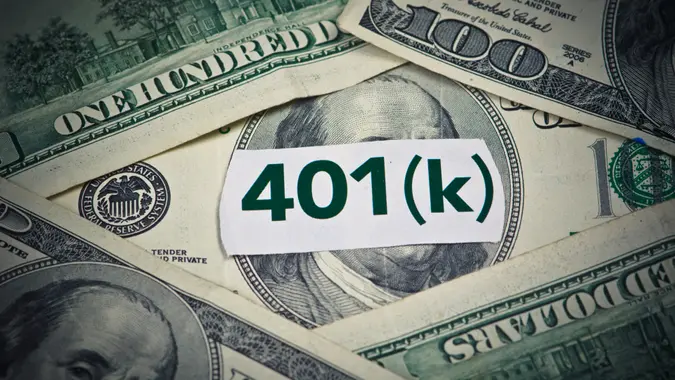How Much Does the Average New Yorker Have in Retirement Savings?

Commitment to Our Readers
GOBankingRates' editorial team is committed to bringing you unbiased reviews and information. We use data-driven methodologies to evaluate financial products and services - our reviews and ratings are not influenced by advertisers. You can read more about our editorial guidelines and our products and services review methodology.

20 Years
Helping You Live Richer

Reviewed
by Experts

Trusted by
Millions of Readers
New York has a reputation for being a “big money” state, but that’s primarily due to its most famous borough, Manhattan in New York City. While some of the richest people in the world do have extravagant residences there — and extraordinary incomes to boot — New York is a big state. In many of the more sparsely populated areas, which are numerous when compared with New York City, incomes are much more modest.
When incomes are closer to average, generally speaking, so too are retirement account balances. In New York as a whole, for example, the average retirement balance is $382,027, according to data from Personal Capital. While this may still seem like a big number to many, it’s likely not the seven-digit figure that many Manhattanites have. How does this number compare to the rest of the nation? Read on to learn more.
How Much Does the Average New York Retirement Balance Compare With Other States?
When compared with average retirement balances in other states, New York actually ranks fairly modestly. For example, North Dakota has the lowest average retirement balance, at $319,609, and that is just 16% below the average New York balance of $382,027.
Connecticut has the highest average retirement balance, at $545,754, meaning New Yorkers have some catching up to do if they want to approach the top slot — a roughly 43% boost, to be exact. Overall, New York has only the 40th-highest average retirement balance of all the states (and the District of Columbia).
How Much Is Generally Recommended To Have Saved for Retirement?
The number “$1 million” is commonly tossed about in the financial press as being the “required” retirement savings for the average American. Some say that figure is insufficient, though, and that $2 million or more is needed.
Commentators like Suze Orman, for example, recommend a number closer to $5 million or even $10 million, although she was referring at the time to those planning on retiring early.
How Average Cost of Living Affects Retirement Savings Needs
The truth about saving for retirement is that it’s not a “one-size-fits-all” scenario. Your cost of living plays a huge role in determining how much you’ll need to finance your retirement.
For example, if you live in a low-cost state in a mortgage-free home and you intend to spend most of your days there, you’ll need a lot less in your nest egg than if you’re in the heart of Manhattan paying sky-high rent and plan to travel the world every month during your retirement.
According to the U.S. Bureau of Labor Statistics, average monthly expenditures for Americans are $6,081, or $72,972 per year. Meanwhile, the average monthly Social Security retirement check, per the Social Security Administration, is $1,915.26, or $22,983.12 per year. This means that the average U.S. citizen will have to make up a shortfall of roughly $50,000 per year if they want to keep their spending the same in retirement.
But averages are just that — averages. If you have a higher or lower cost of living or stream of income in retirement, you’ll have to adjust your calculations accordingly.
 Written by
Written by  Edited by
Edited by 

























